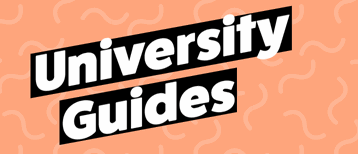What Grades Do I Need to Apply for Art & Design?
If you’re imaginative, passionate about art, and can demonstrate your artistic talents with a strong portfolio then a creative course such as Art and Design would be a good option.
Remember, if you’re applying to study Art & Design in 2016 then you may have an earlier application deadline of 24th March 2016. Check with the universities you’re applying to make sure you don’t miss the application deadline.
An Art and Design course doesn’t just mean sitting around drawing or painting all day. You’ll be asking big questions such as “What is art?” and looking at what art means to different people, communities, and the world as a whole.
However, you’ll also have plenty of opportunity to develop your practical skills and experiment with different materials and styles of art. This could be paint, pastel, sculpture, pottery, mixed media, photography – the list is endless.
The design aspect of the course involves the preliminary planning and you’ll learn how to grow the first ideas for a piece into a great piece of art.
Assessment for these types of courses is mainly coursework based, although for some theory based modules you may be asked to write essays.
So here’s more about applying for and studying an Art and Design course:
What grades do I need to apply for Art & Design?
For many Art & Design courses the university or art school may want you to have completed a foundation course – a one year qualification – before applying to their institution.
This isn’t the case for all courses, so it’s important to check the entry requirements with every university that you apply to.
General entry requirements asked for by universities are 280 UCAS points or equivalent. This would usually work out as BBC in A Level grades.
You might also have your GCSE grades taken into consideration if you’re up against other applicants with the same A Levels.
What A Levels do I need to take for Art & Design?
If you want to study Art & Design at university or art school then A Level Art is essential.
Other useful A Level subjects include:
- Design Technology
- Photography
- History of Art
- Any other design related subject
You may also find that a BTEC National Diploma in general Art & Design will make you an eligible candidate for an Art & Design degree.
Are there any other entry requirements for Art & Design?
To be successful in applying for Art & Design you’ll need a strong portfolio that demonstrates your artistic skills and abilities. You should also expect to be interviewed before being made an offer.
This is part of the reason why taking an Art or design related A Level is essential as the work you do during your course will help you build your portfolio.
Generally your portfolio will be made up of around 15 pieces of work, usually accompanied by the roughs, sketches, and swatches etc. to demonstrate your work methods.
Some universities ask you to submit your portfolio online whilst others ask you to bring your portfolio with you for an interview or open day.
In some cases if the admissions tutor doesn’t like what they see in your portfolio then you won’t be invited to interview. In other cases you’ll be assessed on both your portfolio and your interview.
It can be brutal but as long as you’ve presented your portfolio professionally and you’ve done your preparation for the interview then you’ll do well.
What are my options after graduation?
For many Art & Design graduates their first choice is to continue studying and there are many MA and other postgraduate options available.
For example, courses such as Animation, Arts Journalism, Illustration, Photography and Photojournalism, Advertising, and Games Designs are all popular options with Art & Design graduates.
Other graduates prefer to go straight into the world of work after completing their degree. Although your degree won’t prepare you for a specific job like a vocational course would there are plenty of career options for you.
Graduates that we’ve spoken to have gone into jobs such as becoming an artist, fashion designer, illustrator, textile manufacturer, and museum curator.


